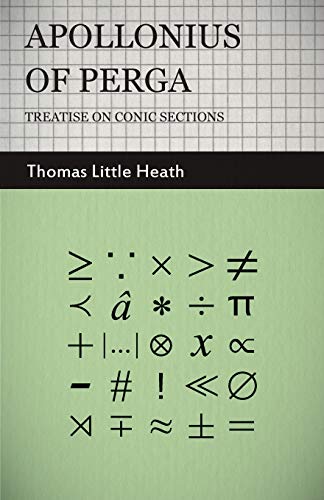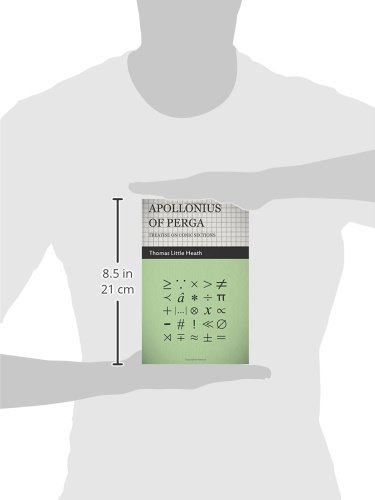



Full description not available
B**S
Inner Space, Outer Forms
The introductory material proves invaluable to understanding this difficult but essential work. Certain theorems of Apollonius also prove essential to understanding what more modern Projective Geometry (and all "non-Euclidean" systems) are referring to as curved lines continue to relate plane and solid geometry more generally. Only here can you get a coherent definition of a "subcontrary" ratio and appreciate its importance for deriving a parabolic curve from a quadratic function. Apollonius' treatment of "central conics" (ellipse and hyperbola) is tedious, to be sure, but worth following toward undestanding what we still mean when we refer to volumes of space as "cubic" measurements.Thomas Heath's task in establishing the text, his background in Greek mathematics and philosophy, and his grasp of linguistics is amazing. He illuminates how many confusions might emerge through translation as he translates with a rare sympathy for the layman rather than the academic. As such, Apollonius' meaning for theoretical geometry becomes a fundamental insight into the more mechanical methods and accomplishments of Archimedes, and the much-discussed difference between Newton and Einstein becomes almost trivial beside this monumental work of Mathematics and this most excellent editor of ancient texts from a century ago, before the study of classical languages became "dead" beside the spider webs of contemporary thought.
O**A
newtons bible
Apollonius is tremendously rewarding and shamefully overlooked. Newtownian physics is not possible without him. The work builds on the geometry of euclid to the application of curved figures (conics). This simple notion creates a whole new paradigm which can now be applied to objects in motion and gravitational forces. The math is brilliant and will help you in understanding Newton's mechanics.
Trustpilot
3 weeks ago
2 days ago